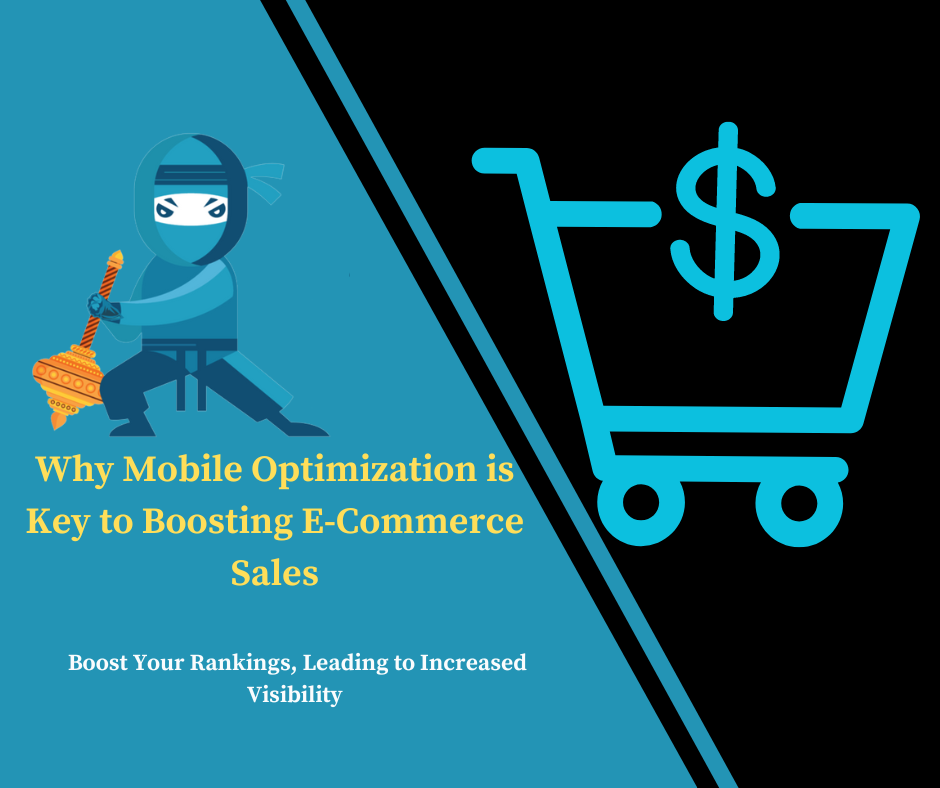Why Mobile Optimization is Key to Boosting E-Commerce Sales
In the competitive world of e-commerce, businesses are constantly searching for ways to increase sales and stay ahead of their rivals. One of the most effective yet often overlooked strategies for boosting e-commerce sales is mobile optimization. As more consumers use their smartphones and tablets to shop online, having a mobile-optimized e-commerce site has become crucial. This article explores why mobile optimization is key to boosting e-commerce sales and offers practical tips to help you enhance your mobile shopping experience.
The Impact of Mobile Optimization on E-Commerce Sales
1. Surge in Mobile Commerce
Mobile commerce, or m-commerce, is growing rapidly. Recent studies show that over 70% of e-commerce traffic comes from mobile devices, with a significant portion of online sales being completed on smartphones and tablets. If your e-commerce site isn’t optimized for mobile, you’re missing out on a substantial amount of potential revenue. Mobile optimization ensures that your site is accessible and functional across all devices, capturing a larger audience and driving more sales.
2. Enhanced User Experience
User experience (UX) plays a crucial role in driving conversions and increasing sales. A mobile-optimized site offers a seamless and enjoyable shopping experience for users, with features such as fast load times, easy navigation, and clear calls to action. When customers encounter a well-designed mobile site, they are more likely to stay longer, browse more products, and complete their purchases. On the other hand, a poorly optimized mobile site can lead to frustration, high bounce rates, and lost sales.
3. Improved Conversion Rates
Conversion rates are a key metric for measuring the success of an e-commerce site. Mobile optimization directly impacts these rates by making it easier for users to complete their transactions. Streamlined checkout processes, mobile-friendly payment options, and simplified forms contribute to higher conversion rates. Research indicates that mobile-optimized sites have a higher conversion rate compared to their non-optimized counterparts, resulting in increased revenue and profitability.
4. Increased Visibility and Traffic
Search engines, particularly Google, prioritize mobile-friendly sites in their rankings. Google’s mobile-first indexing means that the mobile version of your site is used to determine your search engine ranking. A mobile-optimized site is more likely to rank higher in search results, leading to increased visibility and organic traffic. This enhanced visibility drives more potential customers to your site, providing more opportunities for boosting e-commerce sales.
Also read: Mobile Optimization: Boost Website Speed for Mobile Users
Effective Strategies for Boosting E-Commerce Sales through Mobile Optimization
1. Implement a Responsive Design
A responsive design ensures that your e-commerce site adapts to various screen sizes and orientations, providing a consistent user experience across devices. This design approach eliminates the need for separate mobile and desktop versions of your site, simplifying maintenance and improving performance. A responsive site adjusts content, images, and layout to fit the user’s device, making it easier for customers to navigate and shop.
2. Optimize Loading Speed
Speed is critical for mobile users. Slow-loading pages can lead to high bounce rates and abandoned carts. To optimize loading speed, compress images, reduce HTTP requests, and leverage browser caching. Tools like Google PageSpeed Insights can help you identify performance issues and provide recommendations for improvement. By enhancing your site’s loading speed, you create a smoother shopping experience that encourages customers to complete their purchases.
3. Simplify Navigation and Checkout
Mobile users appreciate simplicity and ease of use. Simplify your site’s navigation by using a clean and intuitive menu structure. Ensure that buttons and links are large enough to be easily clickable on small screens. Streamline the checkout process by minimizing the number of steps required to complete a purchase. Offer guest checkout options and integrate mobile payment solutions like Apple Pay or Google Wallet to make transactions quicker and more convenient.
4. Optimize Content for Mobile Devices
Content optimization is essential for a positive mobile experience. Use legible font sizes, concise text, and well-spaced formatting to make your content easy to read on small screens. Optimize images and videos to ensure they load quickly and display correctly on mobile devices. Incorporate mobile-friendly features such as click-to-call buttons and location-based services to enhance the user experience and drive sales.
5. Regularly Test and Update
Mobile optimization is an ongoing process. Regularly test your site’s performance on various mobile devices and gather user feedback to identify areas for improvement. Stay updated on the latest mobile optimization trends and best practices to ensure that your site remains competitive and effective in driving e-commerce sales.
Frequently Asked Questions
What is mobile optimization and why is it important for e-commerce?
Mobile optimization refers to the process of designing and adapting your e-commerce site to provide a seamless and user-friendly experience on mobile devices. It is important because a growing number of consumers use smartphones and tablets for online shopping. An optimized mobile site enhances user experience, improves conversion rates, and boosts e-commerce sales by making it easier for customers to browse and complete purchases.
How can mobile optimization boost e-commerce sales?
Mobile optimization boosts e-commerce sales by enhancing user experience, increasing conversion rates, and improving visibility in search engine rankings. A mobile-optimized site provides faster loading times, simplified navigation, and a streamlined checkout process, which leads to higher customer satisfaction and increased sales. Additionally, better search engine rankings drive more traffic to your site, creating more opportunities for sales.
What are some common mistakes to avoid in mobile optimization?
Common mistakes to avoid include using a non-responsive design, having slow loading times, cluttered navigation, and poorly optimized content. To avoid these issues, ensure your site is responsive, optimize images and scripts, simplify navigation and checkout processes, and regularly test and update your site for optimal performance.
How often should I review and update my mobile optimization strategy?
You should review and update your mobile optimization strategy regularly to keep up with changing technology and user expectations. Monitor your site’s performance, stay informed about mobile optimization best practices, and make adjustments as needed to ensure a consistently excellent user experience and continued success in boosting e-commerce sales.
What tools can help with mobile optimization?
Several tools can assist with mobile optimization, including Google’s Mobile-Friendly Test, PageSpeed Insights, and Google Analytics. These tools help you evaluate your site’s performance on mobile devices, identify areas for improvement, and track user behavior to make data-driven decisions for enhancing mobile optimization.
Conclusion
Mobile optimization is a critical component of a successful e-commerce strategy. By focusing on mobile optimization, you can enhance user experience, increase conversion rates, and improve search engine visibility. Implementing responsive design, optimizing loading speed, simplifying navigation and checkout, and regularly testing and updating your site are essential strategies for boosting e-commerce sales. As mobile commerce continues to grow, prioritizing mobile optimization will help you stay ahead of the competition and drive more revenue for your online business.








